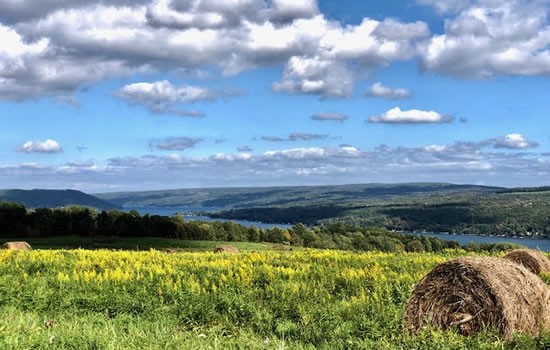― SPRING CLEANING AND THE LAKE ―
Now that spring is here, homeowners turn their attention to preparing properties for outdoor activities. Every KLA member was given a complimentary copy of the Keuka Lake Book as part of their membership, and in the guide you will find many useful ideas for protecting the lake. As you spruce up your property for summer, here are some ideas to keep in mind (refer to the Keuka Lake Book for more details):
Lawn and Garden
During the next rainstorm, observe the surface runoff on your property. Is there direct runoff from your house, driveway or lawn into the lake or a nearby stream? Direct runoff and erosion from these surfaces can carry unwanted and excessive sediment, nutrients or toxic pollutants to the lake. Proper landscaping, drainage and chemical use around the home can greatly reduce the risk of contaminated runoff during heavy rainstorms. Planting generous amounts of trees, shrubs and ground cover encourages excess rainwater to filter slowly into the soil instead of flowing directly into storm drains or nearby streams. It may be necessary to improve drainage around a home to minimize runoff during storms.
Mowing height is considered the single most important factor in maintaining a healthy lawn and preventing weeds. Local grasses should be cut to a height of three inches, and no more than a third of the leaf area should be removed. Mow often and leave grass clippings on the lawn, as the nutrients and organic matter are equivalent to a fertilization treatment. This approach will encourage healthy growth and discourage weed development. Apply a balanced fertilizer in the fall two weeks after the last mowing; do not apply while the ground is frozen. Around Memorial Day, apply a lighter amount of fertilizer if needed. Before applying a fertilizer, have your soil tested to determine the lawn's specific needs, including pH. A pH of 6.5-7.0 is best for most grasses. (From: Weeds and Your Lawn, NYS IPM Program)
To utilize yard and kitchen waste, consider starting and maintaining a compost pile. Compost piles are easy to manage and a great way to recycle. The 'fruit' of a compost pile is "gardener's gold". Compost is a great soil amendment for gardens, adding nutrients and organic matter, and increasing the "tilth" or water-holding capacity of garden soil. Composting also is a better alternative than burning, land filling, dumping in a nearby stream or in the lake directly.
Creating a compost pile can be as simple as piling yard waste in the 'back forty' and letting it rot. However, you may construct turning bins or purchase plastic turning bins. Actively manage your compost to create garden gold in as quickly as 4 to 6 weeks. Have a pile a minimum or 3' x 3' x 3' (preferably larger) containing a mixture of carbon materials like shredded leaves and nitrogen materials such as grass clippings. Mix these materials together with enough water so that the pile is damp throughout; turn or mix the pile on a weekly basis using a pitchfork or rototiller. A rototiller works well because it shreds the compost, creating more area for active decomposition. You will know that the compost pile is working (decomposing quickly) when it is actually "hot" inside (160º F). If it is not hot, add more grass clippings or other green material and add water if it is dry. Do not add too much grass or the pile will overheat from excess nitrogen causing 'burn out'. If the pile smells like rotten eggs or sulfur, it contains too much nitrogen. To remedy this, mix in more carbon materials like dry leafy matter. When your compost is ready, apply it liberally to your gardens and watch how your plants grow and resist drought.
For more information, consult your Keuka Lake Book or contact a Master Gardener at your local Cornell Cooperative Extension office.

